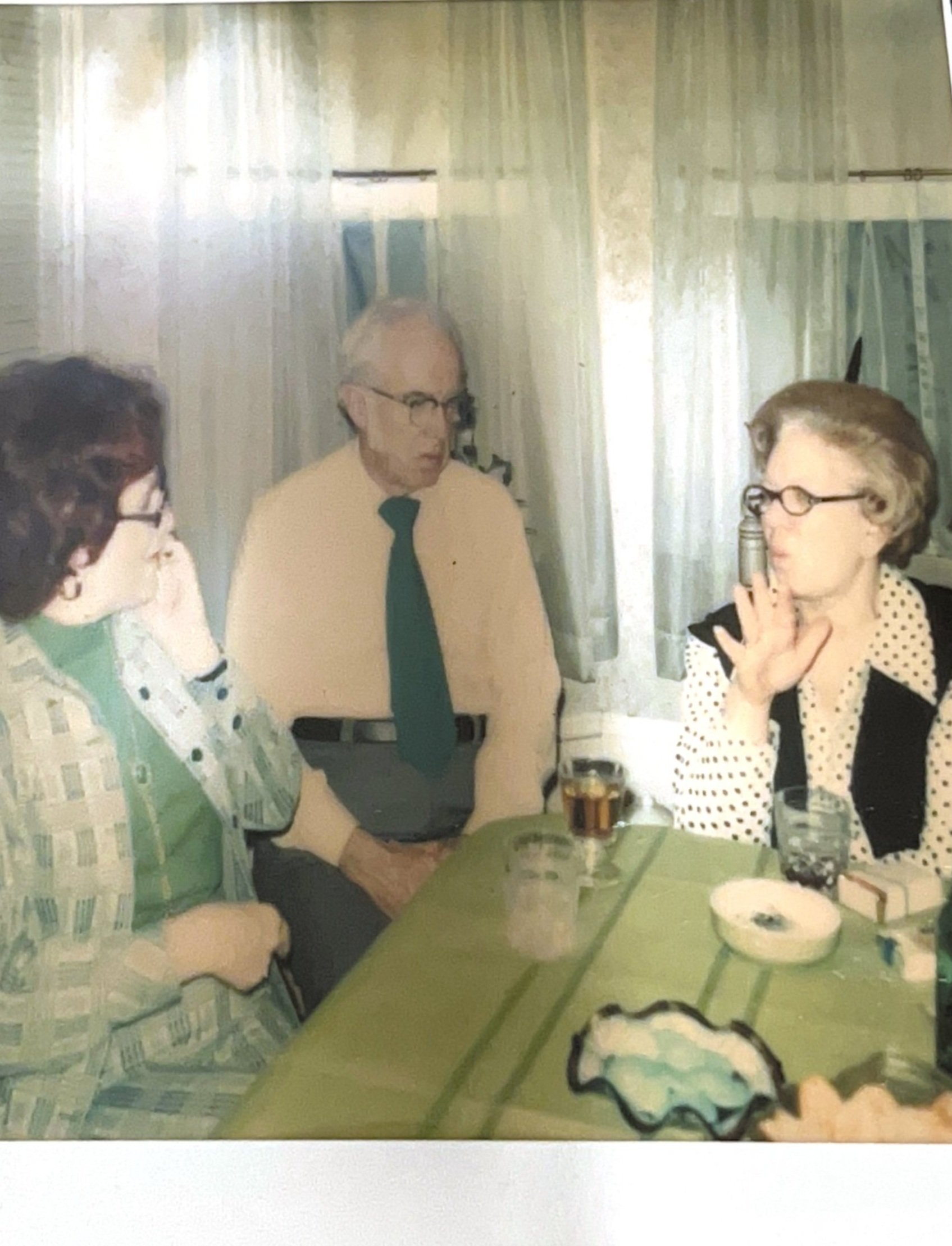Deaf Found Family: Deaf Clubs and Organizations
Boston Deaf Club Outing, 1976
John and Louise deeply valued Deaf centered spaces. The disconnect they faced from a hearing-majority society cannot translate in an almost entirely Deaf space. Within John and Louise’s generation, from birth to their senior years, Deaf Clubs were one of the only spaces where Deaf people could foster connections with other Deaf people.
These were spaces of mutual aid, where members shared resources, advice, and support for navigating challenges like finding employment, dealing with discrimination, or accessing healthcare. These clubs and organizations were instrumental in addressing the unique needs of Deaf people, such as advocating for interpreters in legal or medical settings. This society was tight-knit and members were as close as blood relatives, and my great-grandfather would say, even closer than family.
Most importantly, these spaces were where the Deaf could simply exist in the comfort of a comfortable community. Deaf people could be themselves with other Deaf people of all ages, cultures, and backgrounds. Deaf Clubs were often the only safe havens for the Deaf.
Despite the flaws of the Deaf education they received in the 30s, Deaf schooling introduced them to the value of a space just for Deaf people. After Deaf schooling, they would need to find or create their own Deaf spaces where they could continue to grow as members of the Deaf community.
John and Louise often would travel far throughout Massachusetts and even to International Deaf Conventions to connect with the Deaf community. They both became active in fostering a place for community within their own city. John was a founder of the Quincy Deaf Club and the South Shore Deaf Club. Louise was an active advocate for recruiting members and organized all social activities.
Letter to Louise from Gerald
In a letter written to Louise by a friend named Gerald, he expresses his plans to drive to Bridgewater from the South Shore of Massachusetts to see a Deaf play. Traveling in order to experience a Deaf centered space was often necessary. Traveling to immerse in Deaf spaces shows the required effort that comes with building a supporting community and seeking to find members that have commonalities. This commitment to the community has had invaluable effects on Deaf culture as a self-supporting and self-sufficient community. Deaf people traveling to see other Deaf people perform in community theater paved the way for the promotion of Deaf actors and Deaf people in orally dominated fields like the performing arts.
This letter shows a great example of what a ‘Deaf Goodbye’ is.
Since Deaf people valued sharing Deaf spaces with their community, goodbyes often consisted of a brief mention of upcoming events or plans. It would be an event to look forward to and plan with others within the safe space, something comforting and natural.
Unlike widespread hearing culture in America, where goodbyes often include a polite, “See you soon!” Deaf people will often make space for a lengthier goodbye to ensure an in-person interaction in the near future. Since in-person conversation with Deaf people was preferred, communicating via writing in English.
Quincy Deaf Club Stage Show, approx 1975
Deaf Community Center, Framingham, 1976
Deaf Clubs, Spaces for Deaf Joy
*
Deaf Clubs, Spaces for Deaf Joy *
"Deaf joy" refers to the unique happiness experienced differently by individual members of the Deaf community when one embraces the Deaf Culture all aspects of life. Deaf Joy is celebrating Deaf culture, sign language, and Deaf spaces. Deaf joy highlights the community's resilience, creativity, and rich identity. It emphasizes thriving rather than simply overcoming challenges, focusing on connection and empowerment, and embracing Deafness as a central, positive part of life. Deaf Joy is something the Deaf individual pursues for their own fulfillment, not solely a commitment to the culture, but by committing to self-fulfillment, they act as role models for Deaf generations and Deaf spaces to come.
5th Anniversary Cambridge Athletic Association of the Deaf, September 31, 1941-1946. John Horrigan, seated in the rightmost seat of the beginning row. John was an avid sports lover and player. His height afforded him as a great basketball player. His passion for sports lead him to be a early founding member of Cambridge’s Athletic Association of the Deaf.
‘Deaf Puppet’ taken by Louise Horrigan of John Horrigan and friend at Quincy’s Deaf Club.
Louise Horrigan (far right) planning a social event for the Deaf in the 1960s. This was commonplace many times per year.
John Horrigan dressed like a woman for a Deaf play in the 1950’s. His personality and funny character come through in this photo.
John Horrigan (red arrow pointing to him) at the ribbon ceremony opening The Quincy Deaf Club, 1976.









